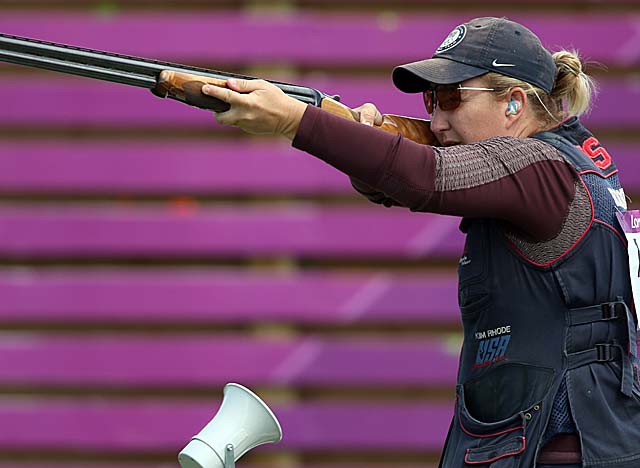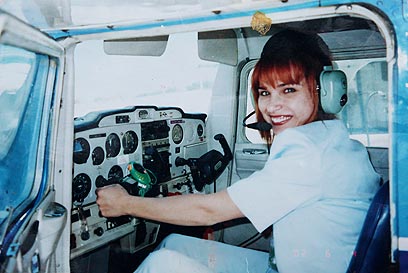And if you can go, you'd better go. Who knows what will happen to General Aviation in t he near future...
From Flightglobal:
http://www.flightglobal.com/news/articles/flightglobals-ten-things-you-have-to-see-list-for-eaa-airventure-2012-373677/
Those lucky enough to be making the trek to Oshkosh, Wisconsin, for
the Experimental Aircraft Association's AirVenture 2012 event,
commencing 23 July, won't just get to participate in general aviation's
largest gathering worldwide. They'll also get to take in visual treats
from every era and sector of aviation, from parachute teams to
firework-lit aerobatic displays and piston singles to wartime bombers.
In our show preview, we list the 10 sights you must see to get the most
out of a unique event in the industry calendar.
For a flavour of what to expect, revisit our multimedia report on last year's show
DAUNTLESS RECOVERY
Twenty years after unassembled pieces of Glacier Girl first came to
AirVenture for public viewing, another aircraft in need of restoration
is expected to arrive at Oshkosh - a Second World War Douglas SBD-3
Dauntless dive bomber the National Naval Aviation Museum plans to raise
from Lake Michigan this summer.
If things go to plan, the Dauntless pieces will be transported to the
show before heading for Pensacola, Florida to be restored for static
viewing in the museum. According to the EAA, the Dauntless belonged to
Fighter Squadron 14, the US Navy's oldest active squadron, aka the
Tophatters. "Based on the carrier USS Ranger, the squadron provided air
support for Operation Torch, the Allied invasion of North Africa in
November 1942," says the EAA.
SBD dive bombers were credited with heavily damaging the Vichy French
battleship Jean Bart in Casablanca harbour, as well as destroying 14
enemy aircraft. Records also show the aircraft participated in the first
American naval air strike against German forces in Norway's inner
channel.
The Dauntless ended up in Lake Michigan in October 1943 after a pilot
got into difficulty making a carrier landing training run on the USS
Wolverine.
 |
|
US Navy
The Dauntless sank in Lake Michigan
|
CANADIAN SKYHAWKS PARACHUTE IN
If you want to see "crazy things with canopies", be sure to catch the
Canadian SkyHawks parachute team, performing for the first time at
Oshkosh on 27-29 July.
The official skydiving team of the Canadian Forces, the eight-member
SkyHawk team jumps from a mile high, but manoeuvres typically do not
finish until 10 to 15ft (3 to 4.5m) above the ground, when team members
unlock legs and bring their canopies in for a smooth landing.
The so-called "parabatics" are often based on stacks and formations,
with biplane structures - two canopies flying together as a biplane - as
the theme.
The team, part of the Canadian Forces' Centre of Excellence for Land Advanced Warfare, has been performing for 41 seasons.
The team commander is Capt Pierre Pelletier, an infantry officer with
the Royal 22nd Regiment. With the Canadian Forces for 25 years,
Pelletier has served tours of duty in Bosnia Herzegovina, Croatia and
Afghanistan. With the SkyHawks, he has performed some 180 jumps.
The price of a trip in the Superfortress starts at $600
 |
|
Canadian SkyHawks
The team jumps from a mile high
|
BOEING B-29 TO STRIKE A SWEET NOTE
There are few sounds as sweet as the bass line laid down by four
Wright 3350 radial engines working together on the same wing. Put those
engines on a massive 1944-built silver Boeing B-29 Superfortess named
Fifi, and you have visual and auditory bliss.
Visitors can become part of the aircraft's continuing legacy by
taking a ride - prices range from $600 per seat in the side gunner's
compartment to $1,500 for the bombardier seat in the nose.
A special memory awaits whichever philanthropist places the winning
bid at a 26 July auction for EAA's youth programmes - a 27 July flight
on Fifi in the company of Theodore "Dutch" Van Kirk, the B-29 Enola Gay
navigator who flew the first atomic bomb mission over Japan in 1945.
The B-29 first flew in 1942, with active service starting in 1944.
After the Second World War, B-29s were used in the Korean War in the
early 1950s and remained a key part of the US Air Force's bomber fleet
until the late 1950s.
Operated by the Commemorative Air Force (CAF), N529B, the world's
only flying example of the aircraft, was saved from use as a ground
target for weapons tests in the 1960s and was first flown by the CAF in
1971, says the EAA.
 |
|
Fly For Fun
The price of a trip in the superfortress starts at $600
|
ATTU BUOYANT 67 YEARS ON
Although similar in form to its civilian brother the Lodestar, the
Lockheed PV-2 Harpoon was quite the war machine, carrying nine 0.50cal
Browning machine guns, 2,722kg (6,000lb) of bombs and two types of
rockets.
A Navy Lockheed PV-2 Harpoon called Attu Warrior is a must-see for
any first-time visitor to AirVenture this year. Operated by the Warbird
Warrior Foundation, the Pratt & Whitney R-2800 radial-powered twin
is painted in the colours of US Navy Squadron UPB-139, which operated
out of the Attu Islands - in Alaska's Aleutian Island chain - during the
Second World War.
Attu Warrior, however, never saw service in the Second World War,
having been built too late in 1945. After being decommissioned from the
Navy in 1957, the aircraft went through several civilian owners,
eventually sitting on a ramp for 20 years.
Ultimately, Dave Hansen, of Dave's Custom Sheet Metal, in Heber City,
Utah, acquired the Lockheed PV-2 Harpoon in 2006 as a restoration
project.
 |
|
Christopher Ebdon
An Attu Warrior painted in the colours of US Navy Squadron UPB-139
|
GLACIER GIRL COMES IN FROM THE COLD
This Lockheed P-38F - named Glacier Girl - was recovered from the
depths of the Greenland ice cap 20 years ago. The aircraft was a member
of the "lost squadron" of six P-38Fs and two B-17Es which landed on the
ice cap in July 1942 because of bad weather en route to Europe from the
USA in 1942.
The aircraft were part of Operation Bolero, an effort to fly fighters
and bombers to Europe rather than take them on ships which were in
grave danger of being sunk by German U-boats.
When the Greenland Expedition Society honed in on her location during
the summer of 1992, Glacier Girl was 268ft (82m) below the ice.
After a 10-year restoration, N17630 took to the air again in 2002,
becoming a regular guest at AirVenture, starting in 2003. The Allison
V1710-powered twin aircraft is owned by Texas-based aviation enthusiast
Rod Lewis, who also plans to bring two other warbirds from the Lewis Air
Legends collection to the show - a Bell P-39 Airacobra and Curtiss P-40
Warhawk.
 |
|
D.Miller
The Lockheed P-38F was discovered 82m below the ice in Greenland
|
JUNKERS ON A JAUNT
Although not the first of its type to appear at Oshkosh, the Junkers
Ju 52 tri-motor (HB-HOT) has travelled the longest distance to get to
this year's show. Flying across the Atlantic via Iceland, Greenland and
Canada, the 1939-built Ju 52 started its tour in Germany in mid-June,
near to where the BMW-powered 17-passenger low-wing has been used in
Switzerland for air tours since 1982.
Along with parking on the static line, where visitors can study the
660hp (490kW) BMW radials and German-engineered cockpit up close, the Ju
52 will take part in the daily Rockwell Collins-sponsored air displays
at the AirVenture, showing off its 97kt (180 km/h) cruise speed. The Ju
52 was designed by Hugo Junkers and was first flown in May 1932, says
the EAA, noting that within six years, the model was flying 75% of all
German air passenger flights.
"The tri-motor configuration supplied a high standard of comfort and
reliability, even during flights over the Alps," says the EAA. "It
remained an important part of European aviation for more than three
decades." The tour is being sponsored by German luggage manufacturer
Rimowa.
 |
|
Rimowa
The Ju 52 arrives from Germany via Iceland, Greenland and Canada
|
CHAMBLISS AT THE CUTTING EDGE IN AEROBATICS
A must-see performer at AirVenture is five-time US National Aerobatic
Champion Kirby Chambliss flying his Zivko Edge 540, a man with so many
aerobatic hours he says the Zivko's wings are mere extensions of his
arms. Chambliss is also a two-time Red Bull Air Race World Champion.
Built by Oklahoma-based Zivko Aeronautics, the Edge is capable of 420
degree per second roll rates and 3,700ft/min (19 m/s) climb rate with
its 340hp (254kW) modified Lycoming AEIO-540 piston engine.
 |
|
Steve Smith
Chambliss won the Red Bull Air Race twice
|
CUBS PITCH UP AT 75
A yellowing of the skies over Whitman Field on 24 July will be the
most visually compelling spectacle of the week - but certainly not the
loudest - as an estimated 200 to 300 Piper J-3 Cubs arrive en masse at
the airport, weather permitting, to celebrate the 75th anniversary of
the type.
Development started in 1935 as a variant of the open-cockpit Taylor
E-2, and the J-3 - so often painted in bright yellow - has become
synonymous with light aviation to the point where any small aircraft is
often wrongly labelled a "Piper Cub".
During a production run from 1938 to 1947, Piper built nearly 20,000 of the piston-powered high-wing singles.
The company later upgraded the J-3 into the more powerful PA-11 Cub Special and the PA-18 Super Cub.
The line ultimately ended at Piper in 1981, but new production lives
on through several airframers, including Cub Crafters and American
Legend Aircraft.
A Piper J-3 Cub is to be awarded as the grand prize in the 2012 EAA
"Win the Cub" Aircraft Sweepstakes, a long-running annual giveaway run
in support of the association's aviation education programmes.
 |
|
Tom Paradis
Piper Cubs will mass for a celebration
|
TINKER BELLE BRINGS A SPARKLE OF MAGIC
The Curtiss C-46F Commando Tinker Belle will appear at AirVenture for the first time.
A rare sight in the air, the Second World War transport is named after its long-time home at Tinker Air Force Base in Oklahoma.
The heaviest and largest twin-engined aircraft operated by the US
Army Air Force during the Second World War, the C-46F - which is owned
and operated by Warriors and Warbirds - is still resplendent in its
original military colours and interior.
With considerable more payload than the DC-3 (C-47), Pratt &
Whitney R-2800-powered C-46s played a major role in operations over the
Himalayan mountain range - known as the "Hump" - flying fuel and other
supplies from bases in India to China in the early 1940s.
 |
|
Kathy Kimpel
The C-46F: the USAF’s largest twin-engined aircraft during the Second World War
|
ROCKWELL COLLINS' NIGHT AIR SHOW
Fireworks and flying, two forms of entertainment that would otherwise
be mutually exclusive, will be weaved together into an exquisite
night-sky ballet by aerobatic performers at Oshkosh again this year.
Sponsored by Rockwell Collins, the night air show on 28 July -
AirVenture's final evening, or "Super Saturday" - is in many respects
the apex of the many spectacles taking place at the week-long event.
Night performers - flying aircraft which will carry specialist
lighting equipment or spark generators on the wingtips - include the
four T-6 Trojans in the AeroShell Aerobatic Team, Bob Carlton and his
jet-powered sailplane, Gene Soucy in his Showcat biplane, Bill Leff in a
T-6, and "Wicked Willy" reaching amazing speeds on the runway in his
jet dragster.
All this plus what is billed as a "wall of fire" promise an extravaganza to remember as the Oshkosh curtain comes down.
 |
|
Soucy Airshows
Night performers will light up Oshkosh
|








